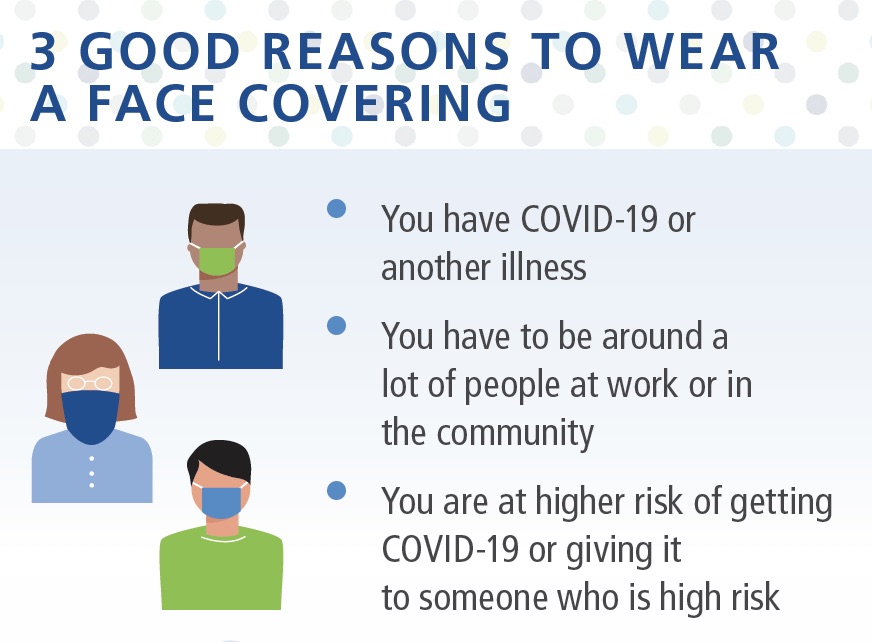The use of face coverings in public can reduce the spread of infection in the community by minimizing the release of respiratory droplets from infected people with or without symptoms.
As restrictions begin to loosen and people start to get out more, we have to do our part to stop the spread of COVID-19, which doesn’t look like it’s going anywhere anytime soon. The CDC recommends that everyone wear cloth face coverings in public places where it’s hard to keep a 6-foot distance from other people. Face coverings combined with other preventive measures, such as frequent hand-washing and social distancing, can help slow the spread of the disease.
